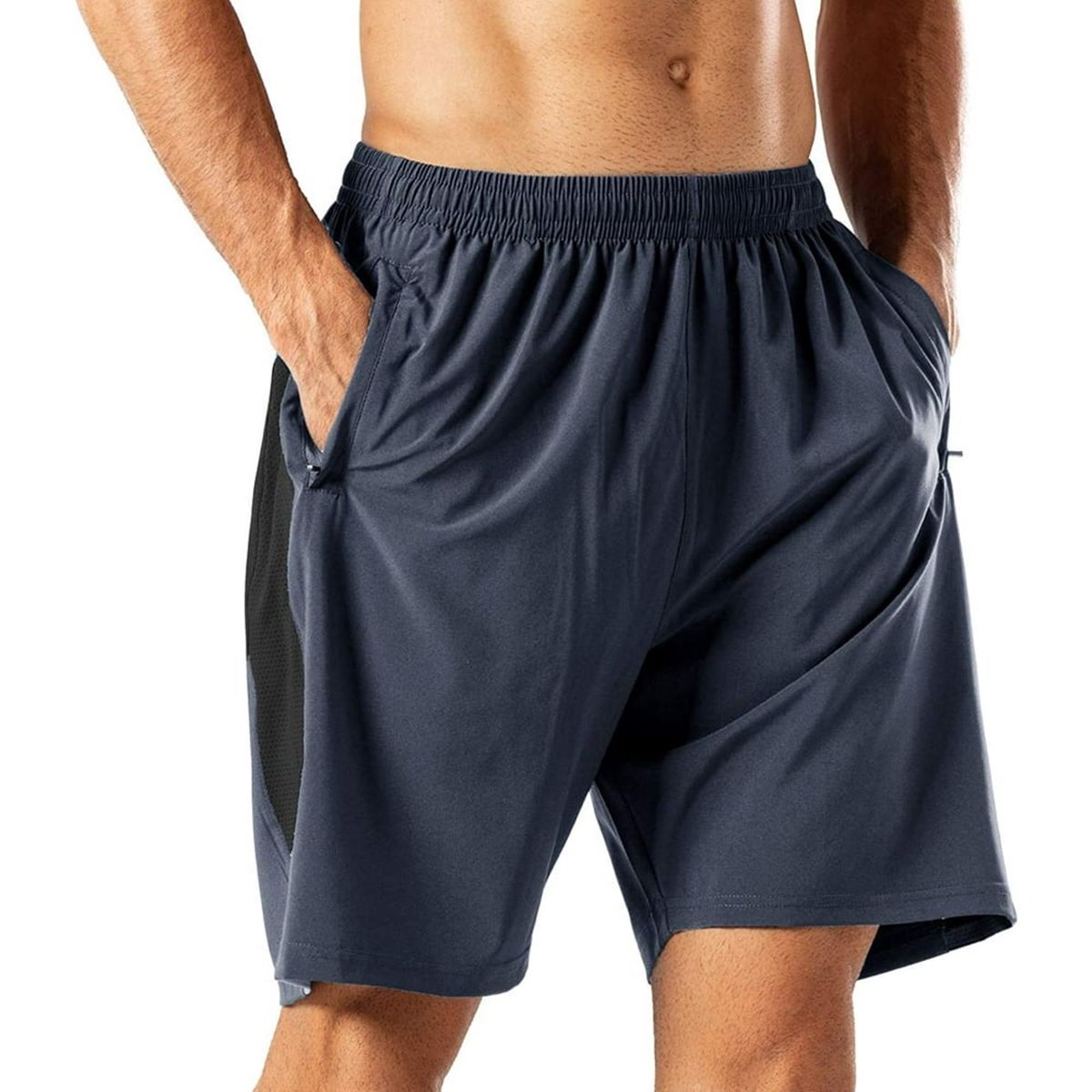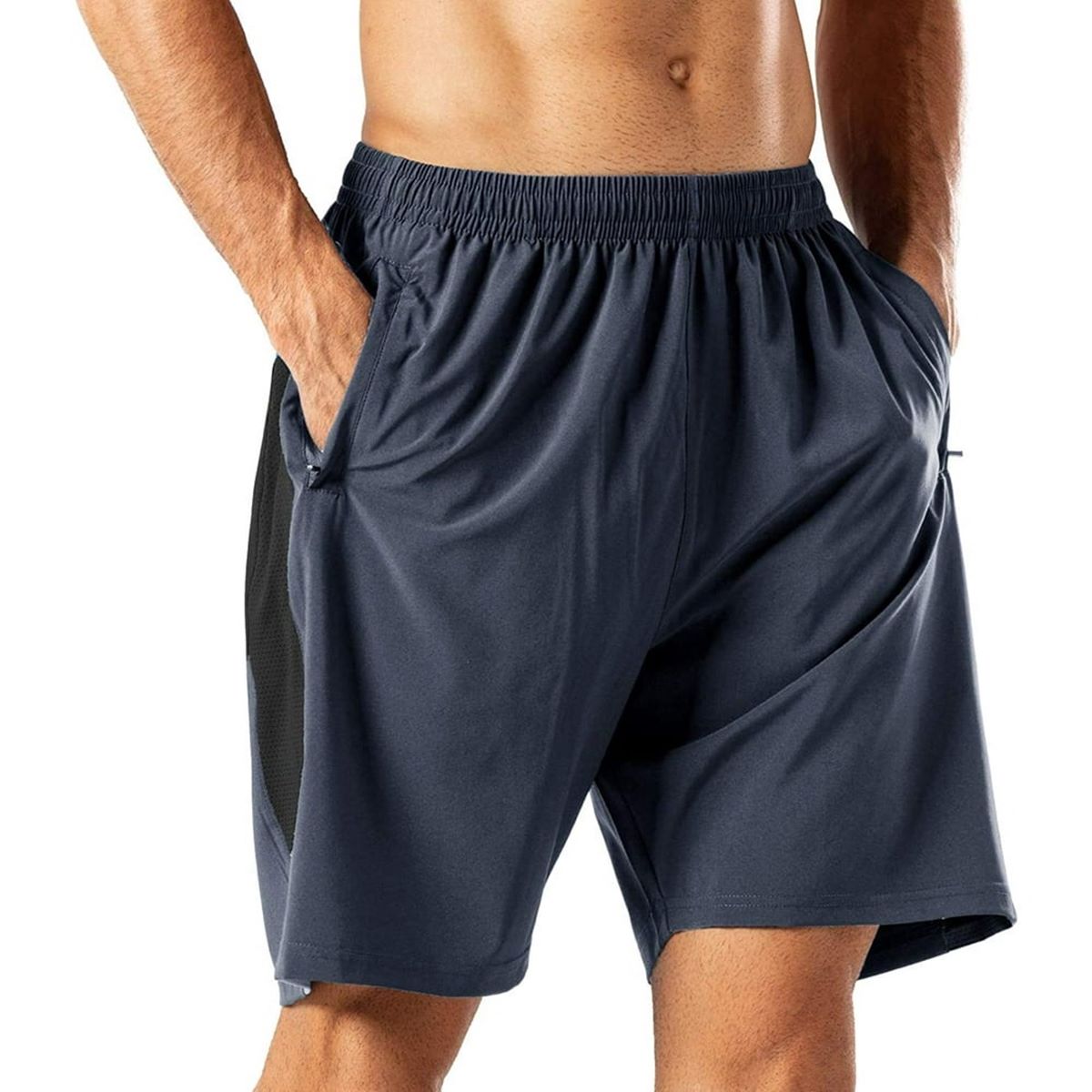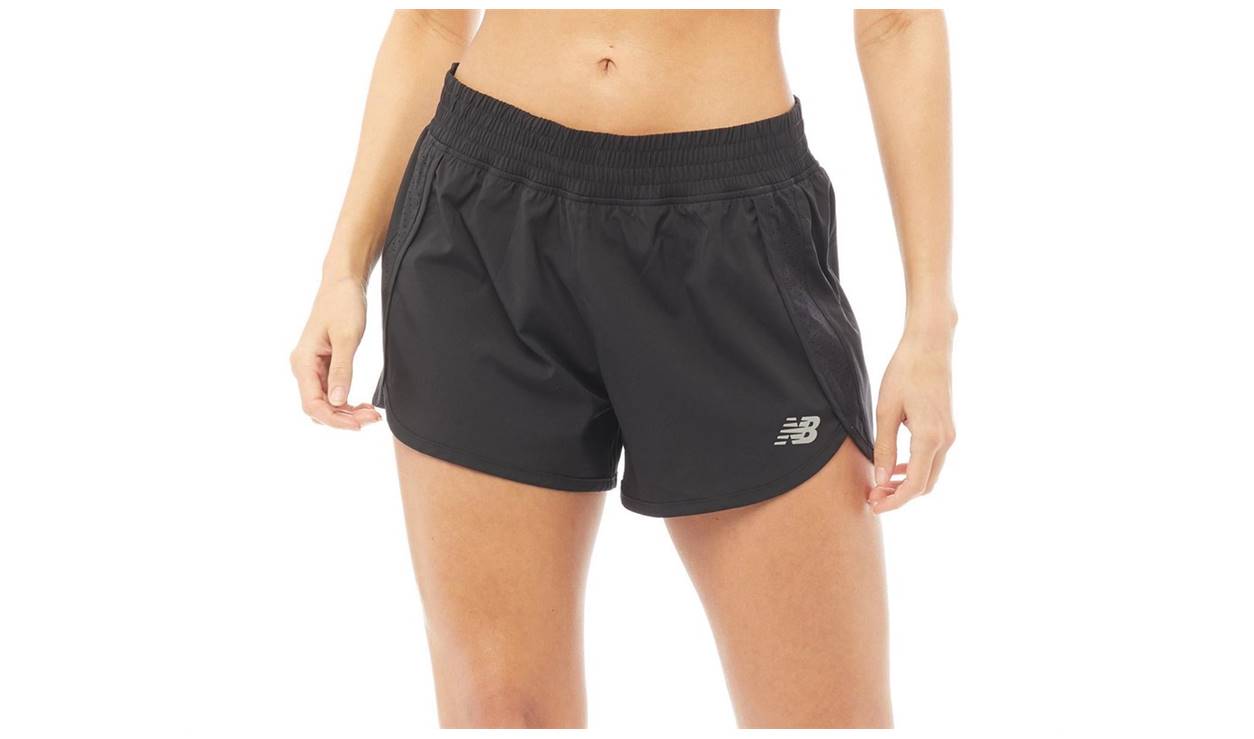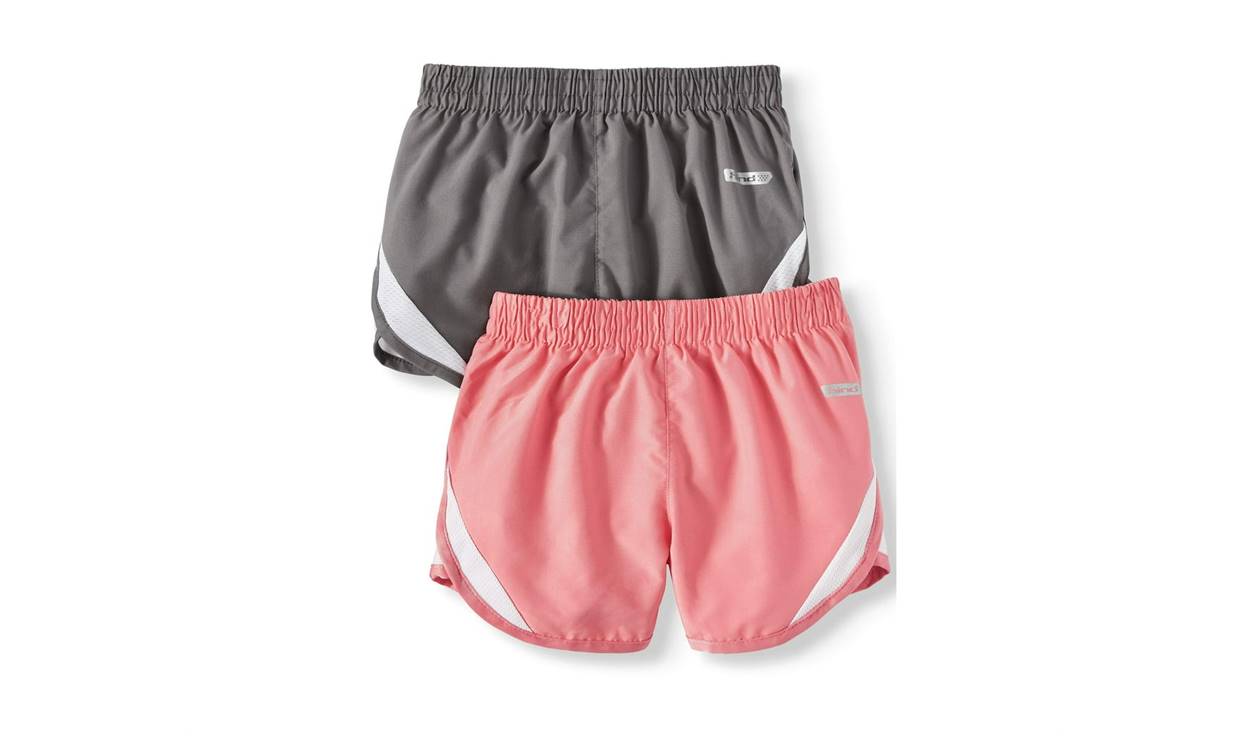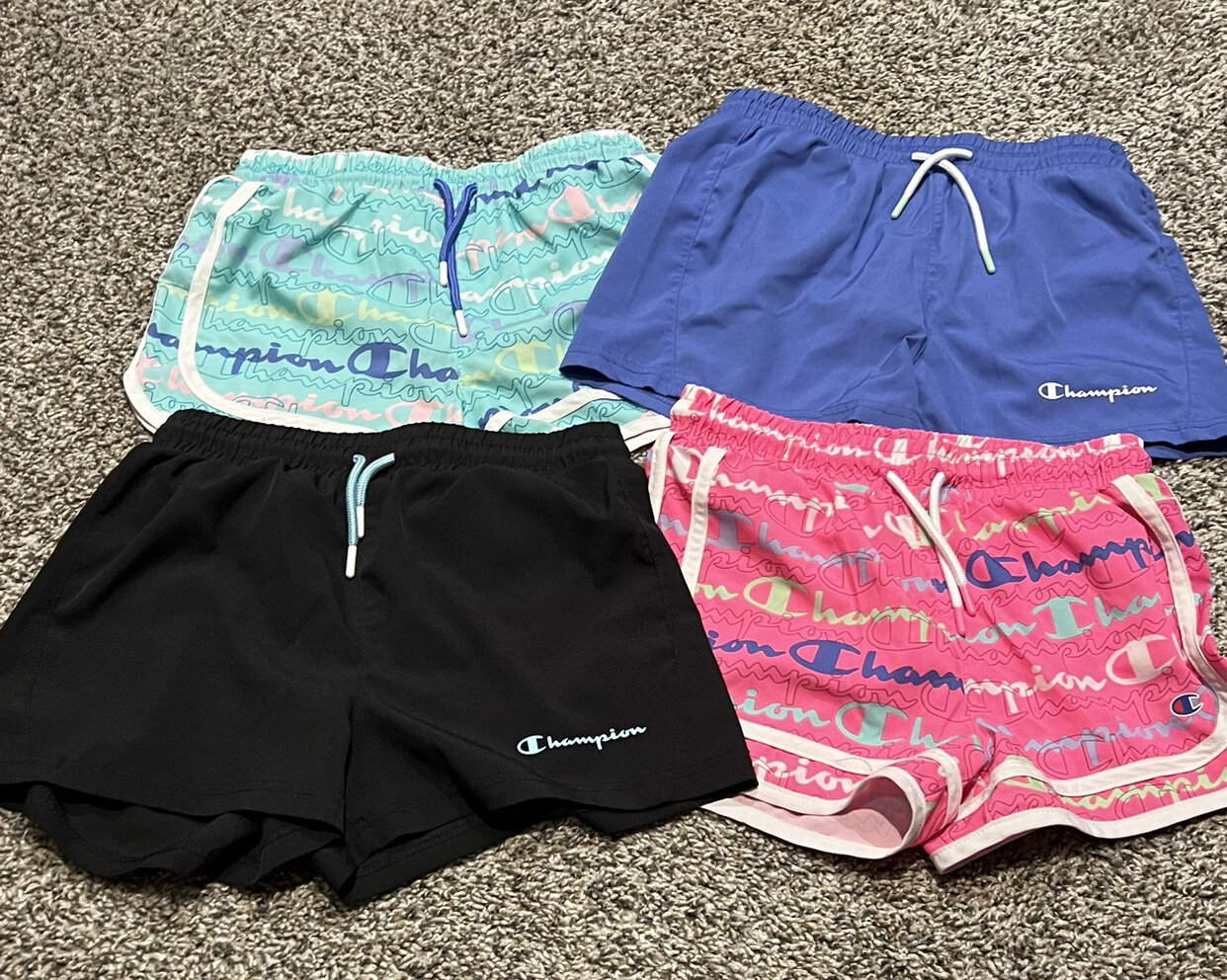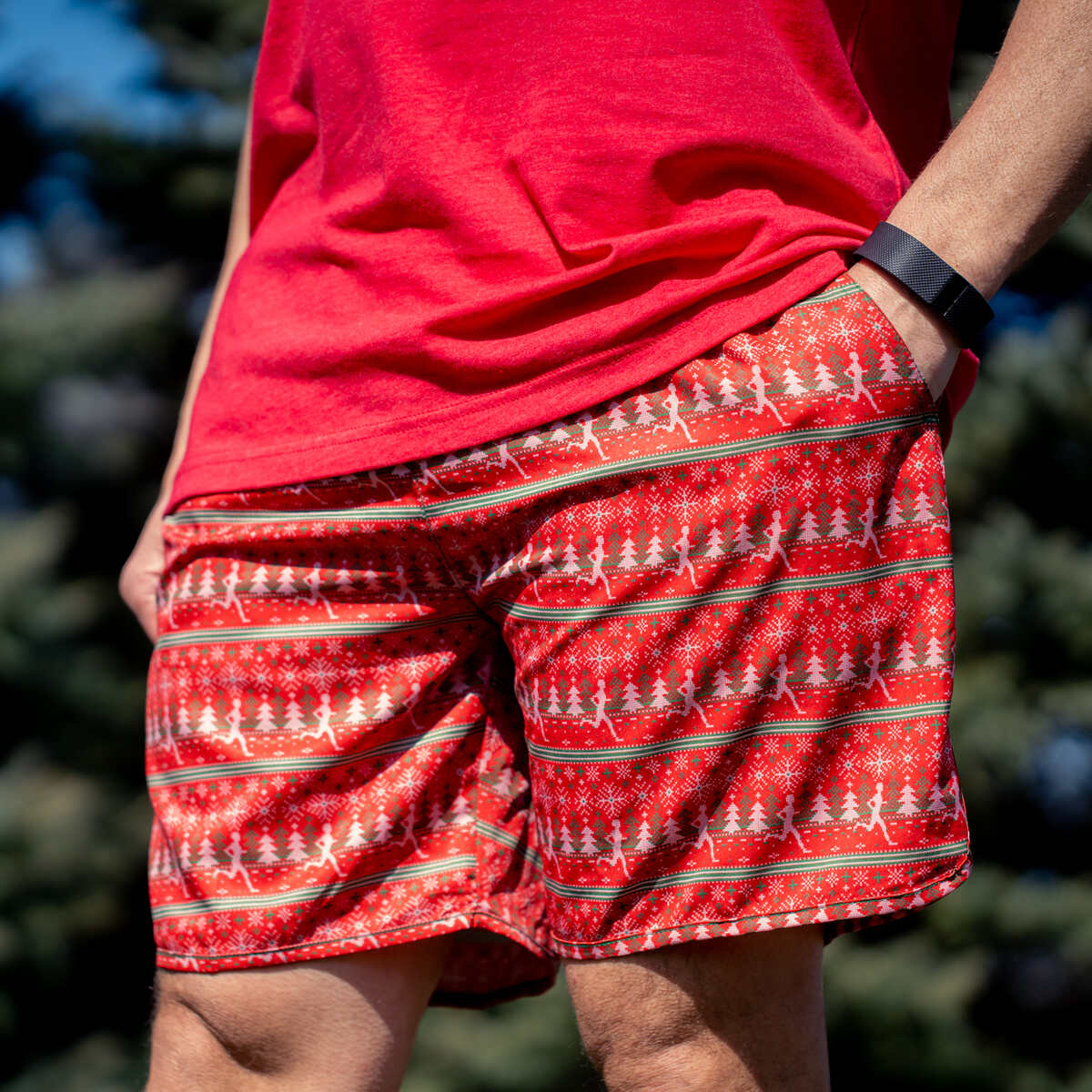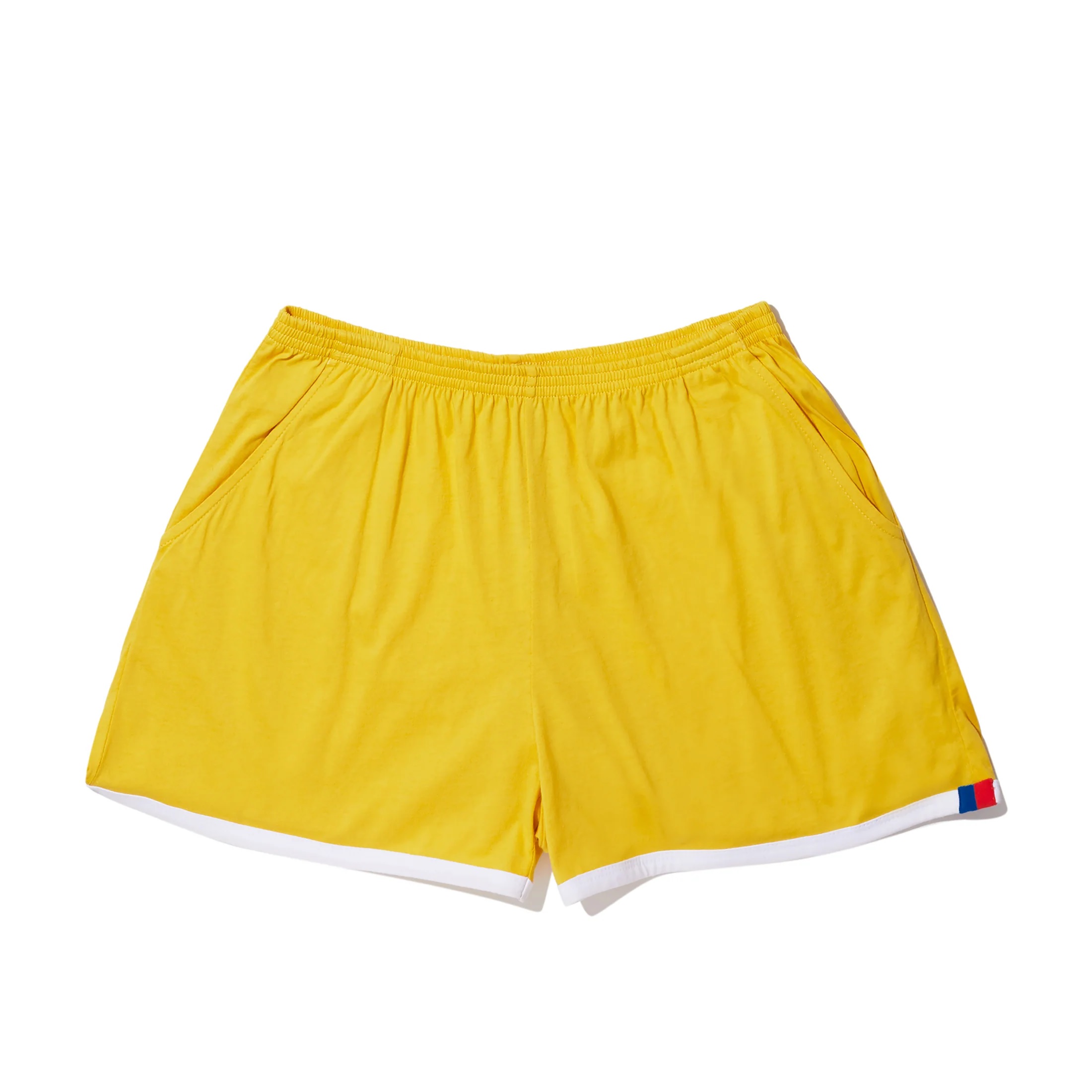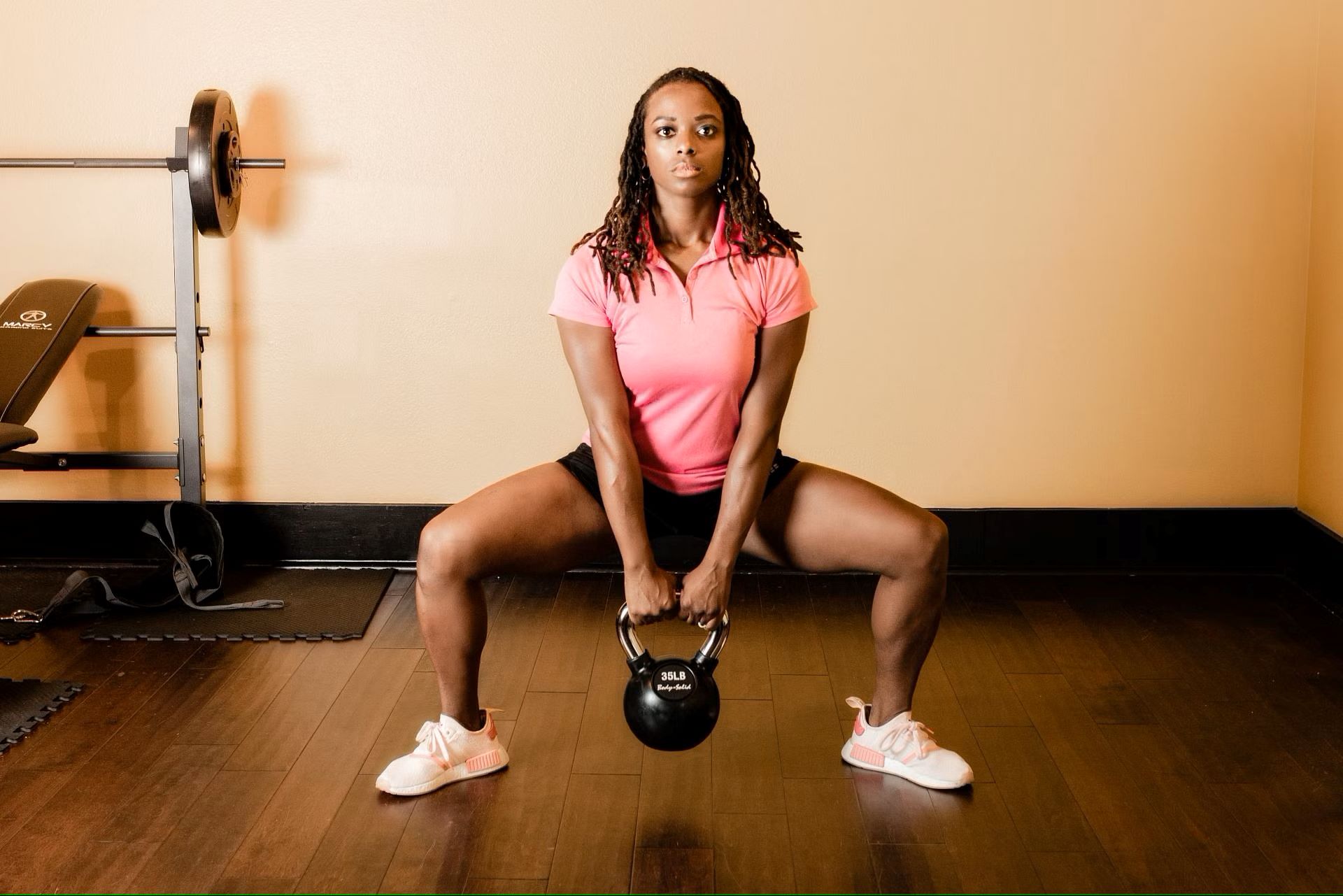

Featured
How To Workout The Inner Thigh
Modified: January 2, 2024
Discover effective exercises for toning and strengthening your inner thighs in this featured workout guide. Transform your legs with expert tips and get the results you desire.
Introduction
Welcome to this comprehensive guide on how to work out the inner thighs. Sculpting and strengthening the inner thighs can provide numerous benefits, including improved balance, stability, and overall lower body strength. Whether you’re looking to tone your thighs for aesthetic reasons or to enhance your athletic performance, this article will provide you with valuable insights and techniques.
The inner thighs, also known as the adductor muscles, play a crucial role in various movements, such as walking, running, and squatting. However, they are often neglected in traditional workout routines, leading to underdeveloped and weaker muscles. By focusing on targeted exercises specifically designed to engage and challenge the inner thighs, you can unlock their full potential and achieve a more balanced lower body.
In this guide, we will explore the anatomy of the inner thighs, the benefits of incorporating inner thigh exercises into your fitness routine, and provide you with a step-by-step workout plan. Additionally, we’ll discuss the importance of warming up before starting your workout and the significance of cooling down and stretching afterwards.
Whether you’re a beginner or an experienced exerciser, there’s something valuable for everyone in this guide. So, let’s dive in and discover how to effectively work out those inner thighs!
Importance of Inner Thigh Workout
The inner thigh muscles are often overlooked in workout routines, but they play a crucial role in both aesthetics and functionality. Working out the inner thighs can provide several benefits that go beyond just appearance. Here are some key reasons why incorporating inner thigh exercises into your fitness regimen is important:
- Improved Lower Body Strength: The inner thighs are responsible for stabilizing the hips and assisting in movements such as walking, running, and jumping. By strengthening these muscles, you can enhance your overall lower body strength and performance in various physical activities.
- Better Balance and Stability: Strong and well-toned inner thighs contribute to better balance and stability. This is especially important for activities that require side-to-side movements or changes in direction, such as dancing, sports, or even everyday tasks like bending, lifting, or carrying heavy objects. A strong inner thigh musculature can help prevent falls and injuries by providing a solid foundation for your movements and enhancing your body’s overall stability.
- Toned and Sculpted Legs: While aesthetics may not be the only reason to work out the inner thighs, toning and sculpting these muscles can undoubtedly enhance the appearance of your legs. Strong and defined inner thighs can contribute to a more balanced and proportionate lower body, giving your legs a lean and sculpted look.
- Improved Core Strength: Working out the inner thighs also engages the core muscles. To perform inner thigh exercises effectively, you need to stabilize your core and maintain proper posture. This, in turn, strengthens your abdominal muscles, enhances your core stability, and improves overall posture and alignment.
- Injury Prevention: Weak inner thigh muscles can contribute to imbalances in the lower body, which may increase the risk of injuries such as strains, sprains, or even knee problems. By strengthening the inner thighs, you can help prevent these imbalances and support the proper alignment of the lower body, reducing the chances of injury during both sports activities and daily movements.
As you can see, working out the inner thighs is not just about looks. It is about improving your overall strength, stability, balance, and reducing the risk of injuries. So, let’s move on to understanding the anatomy of the inner thighs and dive into some effective exercises to target this important muscle group.
Inner Thigh Anatomy
Before diving into the inner thigh exercises, it’s important to understand the anatomy of the inner thigh muscles, also known as the adductor muscles. These muscles are located on the inner side of the thigh and are responsible for bringing the legs together, a movement known as adduction. There are five main muscles that make up the inner thighs:
- Adductor Longus: This muscle is the longest of the inner thigh muscles and runs from the pelvis to the femur. It assists in adduction and flexion of the hip.
- Adductor Magnus: The adductor magnus is a large triangular muscle that extends from the pelvis and attaches to the femur. It helps in both hip adduction and extension.
- Adductor Brevis: Located between the adductor longus and adductor magnus, the adductor brevis assists in hip adduction and stabilization.
- Adductor Gracilis: This long, thin muscle crosses the hip and knee joints and contributes to hip adduction as well as knee flexion and medial rotation.
- Pectineus: Although not strictly an inner thigh muscle, the pectineus is part of the inner thigh muscle group. It assists in both hip flexion and adduction.
These muscles work together to stabilize the pelvis and provide strength and control to the lower body. When well-developed and strong, the inner thigh muscles can support and enhance a variety of movements, whether in everyday activities or sports-related actions.
Due to their location and function, it’s important to engage and activate these muscles specifically during your inner thigh workouts. Targeting the inner thighs with the right exercises will help you maximize the benefits and achieve the desired results.
Now that you have a good understanding of the inner thigh anatomy, let’s explore the benefits of incorporating inner thigh exercises into your fitness routine.
Benefits of Inner Thigh Exercises
Incorporating inner thigh exercises into your workout routine can provide a range of benefits for both your physical health and overall well-being. Here are some key advantages of targeting the inner thighs:
- Increased Lower Body Strength: Inner thigh exercises specifically target and strengthen the muscles in this area, leading to increased lower body strength. This can enhance your ability to perform activities that require lower body power and stability, such as running, jumping, or lifting weights.
- Improved Balance and Stability: Strengthening the inner thighs helps improve balance and stability, as these muscles play a crucial role in maintaining proper alignment and movement of the lower body. Having strong and well-coordinated inner thighs can make a significant difference in your ability to perform various physical activities with ease and confidence.
- Toned and Sculpted Legs: One of the aesthetic benefits of focusing on the inner thighs is that it helps tone and sculpt the legs. By engaging and strengthening these muscles, you can achieve a more defined and leaner appearance in the inner thigh area.
- Enhanced Flexibility: Many inner thigh exercises require a certain level of flexibility, which can be improved with consistent practice. Regularly performing inner thigh exercises can help increase your range of motion and flexibility in the hips, promoting overall joint health.
- Reduced Risk of Injury: Weak inner thigh muscles can contribute to imbalances in the lower body, increasing the risk of injuries such as sprains, strains, or even knee problems. By strengthening the inner thighs, you can help prevent these imbalances and provide better support for the overall alignment of your lower body, reducing the chances of injury during physical activities.
- Improved Posture: Engaging the inner thigh muscles helps promote better posture as it supports the alignment of the hips and pelvis. By strengthening these muscles, you can improve your overall posture and reduce the risk of developing postural issues or lower back pain.
Whether you’re an athlete looking to enhance your performance or simply someone who wants to improve their lower body strength and shape, incorporating inner thigh exercises into your workout routine can provide significant benefits. Now, let’s move on to the next section, where we will discuss the importance of a proper warm-up before starting your inner thigh workout.
Pre-Workout Warm-Up
A pre-workout warm-up is essential before starting any exercise routine, including targeting the inner thighs. Warming up prepares your body for the upcoming physical activity by increasing blood flow, raising your body temperature, and loosening up the muscles and joints. Here are some reasons why a proper warm-up is important:
- Injury Prevention: A warm-up helps reduce the risk of injuries by gradually increasing your heart rate and circulation, allowing your muscles to receive more oxygen and nutrients. This helps to make the muscles more flexible, reducing the likelihood of strains or pulls during the workout.
- Improved Performance: By warming up, you are preparing your body for physical exertion. This helps to improve your performance during the workout and allows you to perform exercises with better form, technique, and efficiency.
- Increased Joint Range of Motion: A warm-up includes dynamic stretches and movements that help to increase the range of motion in your joints. This improves your mobility and flexibility, enabling you to perform exercises with a full range of motion and reducing the risk of joint-related injuries.
- Activation of Muscles: During the warm-up, you can perform exercises that target the muscles you are about to work on. This helps to activate those muscles and mentally prepare yourself for the upcoming workout, ensuring better engagement and effectiveness.
- Mental Preparation: Warming up also provides an opportunity to mentally prepare yourself for the workout. It allows you to focus your mind on the task at hand, improve your concentration, and set goals for your inner thigh workout.
Your pre-workout warm-up routine should consist of dynamic movements that gradually increase your heart rate and warm up your muscles. Some example exercises include jogging in place, high knees, leg swings, hip circles, and bodyweight squats. Aim to spend about 5-10 minutes on your warm-up before moving on to the actual inner thigh workout.
Remember that warming up is an essential step that should not be skipped. It prepares your body physically and mentally for the upcoming workout, maximizing its benefits and reducing the risk of injuries. Now that you understand the importance of a pre-workout warm-up, let’s move on to the next section, where we will dive into the inner thigh workout routine.
Inner Thigh Workout Routine
Now that you’re warmed up and ready to go, let’s jump into an effective inner thigh workout routine. This routine specifically targets the inner thigh muscles, helping you strengthen and tone this area. Remember to maintain proper form and engage your inner thigh muscles throughout each exercise. Here is a sample inner thigh workout routine:
- Sumo Squats: Start with your feet slightly wider than hip-width apart, toes turned outwards. Lower your body into a squat position, keeping your back straight and chest lifted. Push through your heels to return to the starting position. Aim for 10-12 repetitions.
- Inner Thigh Leg Lifts: Lie on your side with both legs extended. Lift your top leg as high as you can while keeping it straight, then slowly lower it back down. Repeat for 10-12 repetitions on each side.
- Side Lunges: Stand with your feet shoulder-width apart. Take a wide step to the side with your right foot, keeping your left foot planted. Bend your right knee, lowering your body into a side lunge. Push off with your right foot to return to the starting position and repeat on the other side. Do 10-12 repetitions on each side.
- Pilates Scissor Legs: Lie on your back with your legs extended. Lift both legs towards the ceiling, then engage your core and lower your right leg towards the floor while keeping the left leg raised. Alternate legs in a scissor-like motion while maintaining control. Aim for 10-12 repetitions on each side.
- Inner Thigh Squeezes: Sit on the edge of a chair or bench with your knees bent and feet flat on the floor. Place a small ball or cushion between your inner thighs. Squeeze the ball or cushion with your inner thighs, hold for a few seconds, then release. Repeat for 10-12 repetitions.
Complete the entire circuit of exercises for one set, then rest for 1-2 minutes before starting the second set. Aim to complete 2-3 sets of the entire circuit. Start with light to moderate resistance and adjust as needed to challenge your muscles. Remember to listen to your body and modify exercises if necessary.
Now that you have a complete inner thigh workout routine, let’s move on to the next section, where we will discuss the specifics of each exercise in detail.
Exercise 1: Sumo Squats
Sumo squats are a great exercise for targeting the inner thighs. This compound movement engages multiple muscle groups, including the inner thigh muscles, glutes, and quadriceps. Here’s how to perform sumo squats correctly:
- Stand with your feet wider than hip-width apart, toes turned outwards at around a 45-degree angle.
- Engage your core, keep your back straight, and maintain good posture throughout the exercise.
- Lower your body by bending your knees and pushing your hips back, simulating a sitting position.
- Go as low as you can while maintaining proper form, ideally until your thighs are parallel to the ground. Keep your knees in line with your toes and try to avoid letting them extend past your toes.
- Push through your heels to return to the starting position. Squeeze your inner thighs and glutes as you stand up to engage those muscles.
- Repeat the movement for the desired number of repetitions.
When performing sumo squats, it’s important to focus on controlling the movement and engaging the inner thigh muscles throughout the exercise. Keep your weight centered over your heels, and avoid leaning too far forward or backward.
To add intensity to this exercise, you can hold a dumbbell or kettlebell in front of your body or perform jump squats, where you explosively jump up from the squat position and land softly back into the squat. However, if you’re a beginner, start with bodyweight squats and gradually increase the intensity as you become more comfortable and stronger.
Remember, quality is more important than quantity. Aim for 10-12 repetitions of sumo squats per set, gradually increasing the number of sets as your strength improves. Take breaks as needed, and always listen to your body. If you experience any pain or discomfort, stop and consult with a fitness professional.
Sumo squats are an effective exercise for targeting the inner thighs and building lower body strength. Let’s move on to the next section, where we will explore another exercise that focuses on strengthening the inner thigh muscles.
Exercise 2: Inner Thigh Leg Lifts
Inner thigh leg lifts are a fantastic exercise for isolating and strengthening the inner thigh muscles. This exercise primarily targets the adductor muscles, helping to tone and sculpt the inner thighs. Here’s how to perform inner thigh leg lifts properly:
- Lie down on your side with your legs extended and stacked on top of each other. Rest your head on your bottom arm and place your top arm in front of your chest for support.
- Engage your core and keep your body in a straight line from head to toe throughout the exercise.
- Keeping your leg straight, lift your top leg as high as you can without rotating your hips or leaning your torso forward or backward. Focus on using the inner thigh muscles to lift the leg.
- Pause for a moment at the top of the movement, feeling the squeeze in your inner thighs.
- Slowly lower your leg back to the starting position with control.
- Repeat the movement for the desired number of repetitions, then switch to the other side and repeat.
Take your time with this exercise and focus on maintaining proper form. Avoid swinging or using momentum to lift your leg, as this can reduce the effectiveness of the exercise. Make sure to keep your hips stable and your core engaged throughout the movement.
You can modify the intensity of inner thigh leg lifts by adding ankle weights or resistance bands. Alternatively, if you find the exercise too challenging, you can bend the bottom leg and rest your knee on the ground for additional support.
Start with 10-12 repetitions on each leg per set, and gradually increase the number of sets as your strength improves. Remember to breathe naturally and listen to your body. If you experience any pain or discomfort, stop and consult with a fitness professional.
Inner thigh leg lifts are a powerful exercise that targets the adductor muscles and helps to tone and strengthen the inner thighs. Let’s move on to the next section, where we will explore another exercise that contributes to a well-rounded inner thigh workout routine.
Exercise 3: Side Lunges
Side lunges, also known as lateral lunges, are a dynamic exercise that effectively target the inner thigh muscles while engaging the glutes and quadriceps. This exercise adds a functional component to your workout routine by mimicking side-to-side movements often used in daily activities and sports. Here’s how to perform side lunges properly:
- Stand with your feet shoulder-width apart and keep your core engaged for stability.
- Take a wide step to the side with your right foot, keeping your left foot planted.
- Bend your right knee and lower your body into a lunge position, keeping your chest lifted, and your back straight. Ensure that your right knee stays in line with your toes and does not extend past them.
- Push through your right heel to return to the starting position.
- Repeat the movement on the other side by stepping to the left with your left foot and lunging to the left side.
- Continue alternating sides, performing 10-12 repetitions on each leg.
It’s crucial to maintain proper form during side lunges. Keep your core engaged and your chest lifted throughout the exercise. As you lower into the lunge, focus on pushing your hips back and maintaining a stable base of support. Your working leg should be doing the majority of the work while the other leg provides balance and stability.
To increase the intensity of side lunges, you can hold dumbbells or kettlebells at your sides or perform jumping side lunges, where you explosively jump from one side lunge to the other. If you’re a beginner, start with bodyweight side lunges and gradually add resistance or explosive movements as you become more comfortable and stronger.
Side lunges not only target the inner thigh muscles but also engage the glutes and quadriceps, providing a well-rounded lower body workout. Incorporate this exercise into your routine to further strengthen and tone your inner thighs. Now, let’s move on to the next section, where we will explore another effective inner thigh exercise.
Exercise 4: Pilates Scissor Legs
Pilates scissor legs is a fantastic exercise that targets the inner thighs while engaging the core and promoting overall body stability and control. It not only strengthens the inner thigh muscles but also challenges the hip flexors and improves lower body flexibility. Here’s how to perform Pilates scissor legs:
- Lie on your back with your legs extended and arms by your sides.
- Lift both legs towards the ceiling, keeping them straight and close together.
- Point your toes and engage your core to maintain stability throughout the movement.
- Lower your right leg towards the floor while keeping your left leg raised. Stop when your right leg is a few inches above the ground or as far as you can comfortably go without lifting your lower back off the floor.
- Hold for a moment, then lift your right leg back up as you lower your left leg towards the floor.
- Continue alternating legs in a scissor-like motion, keeping your movements controlled and controlled.
- Aim for 10-12 repetitions on each leg.
Remember to breathe deeply and maintain a steady rhythm during Pilates scissor legs. Focus on engaging the inner thigh muscles to perform the leg movements while keeping the rest of your body stable and relaxed.
You can modify the difficulty of Pilates scissor legs by adjusting the height at which you lower your legs or by using ankle weights for added resistance. If you’re a beginner, you can also bend your knees slightly or place your hands underneath your hips for additional support.
Pilates scissor legs is not only an effective exercise for targeting the inner thighs but also for strengthening the core and enhancing body control. It provides a unique challenge and adds variety to your inner thigh workout routine. Let’s move on to the next section, where we will explore another exercise that specifically targets the inner thighs.
Exercise 5: Inner Thigh Squeezes
Inner thigh squeezes are a simple yet effective exercise for targeting and strengthening the inner thigh muscles. This exercise can be done using a small ball or cushion and is particularly useful for engaging the adductor muscles. Here’s how to perform inner thigh squeezes:
- Sit on the edge of a chair or bench with your knees bent and feet flat on the floor.
- Place a small ball or cushion between your inner thighs, just above the knees.
- Engage your core and sit up tall, keeping your back straight and your shoulders relaxed.
- Squeeze the ball or cushion between your thighs, using your inner thigh muscles.
- Hold the squeeze for a few seconds, focusing on contracting your inner thigh muscles as much as possible.
- Release the squeeze and repeat for the desired number of repetitions.
During inner thigh squeezes, it’s important to maintain proper posture and avoid using your hands or feet to assist with the movement. Focus on using the inner thigh muscles to perform the squeeze and keep the tension on the ball or cushion throughout the exercise.
You can increase or decrease the intensity of inner thigh squeezes by using a softer or firmer ball, or by adding resistance bands or ankle weights for added challenge. Remember to start with a comfortable level of resistance and gradually increase it as your muscles become stronger.
Perform 10-12 repetitions of inner thigh squeezes per set, and aim for 2-3 sets. Take breaks as needed, and always listen to your body. If you experience any pain or discomfort, stop and consult with a fitness professional.
Inner thigh squeezes are a convenient exercise that can be done anywhere, making them a great addition to your inner thigh workout routine. Now, let’s move on to the next section, where we will discuss the importance of cool-down and stretching after your workout.
Cool Down and Stretching
After completing your inner thigh workout, it’s important to dedicate time to cool down and stretch. Cool down exercises gradually bring your heart rate and breathing back to normal, while stretching helps to lengthen and relax the muscles you worked during your workout. Here’s why cool down and stretching are essential:
- Reduced Muscle Soreness: Cooling down allows your body to gradually transition from exercise to rest, which can help minimize muscle soreness and stiffness. It aids in the removal of waste products, such as lactic acid, that accumulate during exercise.
- Improved Flexibility: Stretching after a workout can enhance the flexibility of your muscles and joints. This can contribute to better posture, increased range of motion, and reduced risk of injuries in future workouts or activities.
- Relaxation and Stress Relief: A cool down with stretching provides a calm and relaxed environment for both your body and mind. It can help reduce stress, tension, and promote a sense of well-being, allowing you to unwind after an intense workout.
Your cool-down routine should include gentle cardiovascular exercises, such as walking or slow jogging, to gradually lower your heart rate. After 5-10 minutes of light cardio, shift your focus to stretching your inner thighs and other muscle groups involved in the workout. Here are a few stretches that target the inner thighs:
- Butterfly Stretch: Sit on the floor with the soles of your feet touching. Hold your ankles and gently press your knees toward the ground, feeling a stretch in your inner thighs.
- Seated Wide-Legged Forward Fold: Sit on the floor with your legs extended wide apart. Hinge at the hips and lower your upper body toward the ground, reaching towards your feet. Feel the stretch in your inner thighs and hamstrings.
- Standing Groin Stretch: Stand with your feet wider than shoulder-width apart. Shift your weight to one side, bending the knee while keeping the other leg straight. Lean toward the bent knee side, feeling a stretch in the inner thigh of the straight leg. Repeat on the other side.
Hold each stretch for 20-30 seconds, breathing deeply and relaxing into the stretch. Only stretch to the point of mild discomfort, never to the point of pain. If you’re unsure about proper stretching techniques, consider seeking guidance from a qualified fitness professional or certified trainer.
Remember, the cool down and stretching phase is just as important as the actual workout. Take the time to properly cool down and stretch to optimize your recovery and maximize the benefits of your inner thigh workout.
Tips for Effective Inner Thigh Workout
To make the most of your inner thigh workout and achieve optimal results, it’s important to follow these tips for an effective and successful session:
- Vary Your Exercises: Incorporate a variety of inner thigh exercises into your routine to engage the muscles from different angles and prevent plateaus. This will help challenge your muscles and promote continuous progress.
- Progress Gradually: Start with lighter resistance or bodyweight exercises and gradually increase the difficulty as your strength and tolerance improve. Aim to challenge yourself without sacrificing proper form.
- Maintain Proper Form: Focus on maintaining proper form during each exercise. This includes keeping your back straight, engaging your core, and using the targeted muscles. Proper form ensures maximum effectiveness and reduces the risk of injury.
- Engage Mind-Muscle Connection: Concentrate on engaging and contracting your inner thigh muscles during each exercise. This mind-muscle connection can help you target the intended muscle group and improve its activation and stimulation.
- Listen to Your Body: Pay attention to how your body feels during the workout and adjust the intensity or modify exercises as necessary. Push yourself but know your limits to avoid overexertion or injury.
- Include Rest Days: Allow for adequate rest days, especially if you’re targeting the inner thighs regularly. Resting and recovering between workouts is crucial for muscle repair and growth.
- Combine with Full-Body Exercises: While targeting the inner thighs is important, don’t neglect other muscle groups. Including compound exercises that work multiple muscles, such as squats or deadlifts, can provide a well-rounded workout and enhance overall strength and stability.
- Stay Hydrated: Drink plenty of water before, during, and after your workout to stay hydrated. Water helps maintain optimal performance, prevents muscle fatigue, and aids in recovery.
- Be Consistent: Consistency is key when it comes to seeing results. Aim for regular inner thigh workouts, whether it’s two to three times per week or as part of a comprehensive fitness routine. Stick with it and be patient as progress takes time.
Remember that everyone’s fitness journey is unique, and it’s essential to find what works best for you. Adjust the intensity, frequency, and duration of your workouts based on your goals and fitness level. Consulting with a fitness professional can also provide valuable guidance and ensure you’re performing the exercises correctly.
By incorporating these tips into your inner thigh workout routine, you’ll be on your way to stronger, more toned inner thighs. It’s time to put these tips into practice and rock those inner thigh exercises!
Wrap-Up
Congratulations! You have completed this comprehensive guide on how to work out the inner thighs. We have explored the importance of targeting the inner thighs, the anatomy of these muscles, and the benefits of incorporating inner thigh exercises into your fitness routine. Additionally, we discussed the significance of pre-workout warm-ups, provided a detailed inner thigh workout routine, and covered stretching and cool-down techniques.
By regularly engaging in inner thigh exercises, you can improve lower body strength, enhance balance and stability, achieve toned and sculpted legs, and reduce the risk of injuries. Remember to vary your exercises, progress gradually, and maintain proper form throughout your workouts. Listen to your body, take rest days when needed, and aim for consistency to see noticeable results.
As with any fitness journey, it’s important to keep in mind that progress takes time and individual results may vary. Stay patient, stay motivated, and remember that taking care of your overall health and well-being is just as important as working on specific muscle groups.
Now it’s time to put your newfound knowledge into practice and start working towards stronger, more toned inner thighs. Remember to consult with a fitness professional or consider seeking personalized advice if you have any specific concerns or questions.
So go ahead, give your inner thighs the attention they deserve and enjoy the benefits of a well-rounded lower body workout. Stay committed, stay focused, and embrace the journey towards a healthier, happier you!
